Welcome to the ultimate guide to kakariki care! As a responsible pet owner, it’s important to understand your feathered friend’s unique needs and requirements. In this comprehensive guide, we’ll cover everything you need to know about providing the best possible care for your kakariki.
From housing and feeding to socialization and breeding, we’ll provide expert advice and practical tips to ensure your kakariki is healthy, happy, and thriving. Whether you’re a first-time bird owner or have years of experience, this guide has something for everyone.
So, let’s dive in and explore the fascinating world of kakariki care together!
Kakariki Species Overview
Kakariki are a type of parrot native to New Zealand, and several species differ in appearance, behaviour and habitat preferences. The most common species found as pets are the Red-crowned Kakariki, Yellow-crowned Kakariki, and the Antipodes Island Kakariki.
| Species | Appearance | Behaviour and Habitat |
|---|---|---|
| Red-crowned Kakariki | 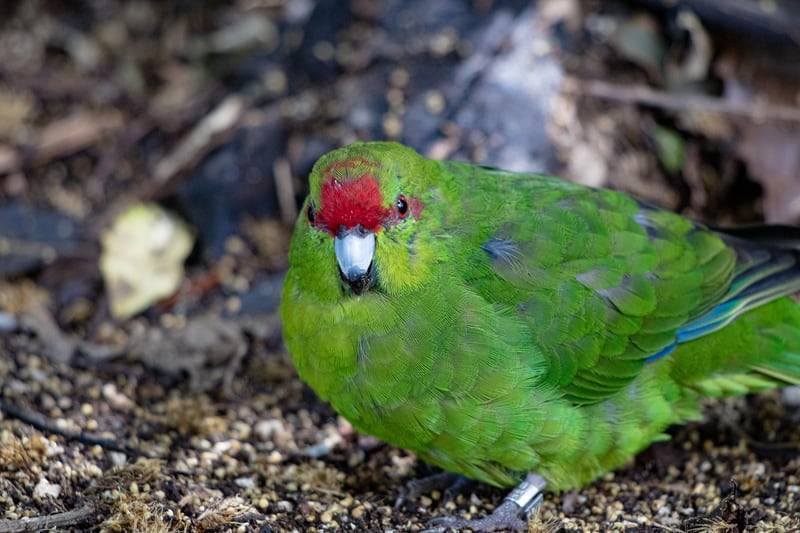 | Red-crowned Kakariki are mostly green with a red head, and are found in a variety of habitats such as forests, scrublands and grasslands. They are active and curious, and enjoy exploring and playing. |
| Yellow-crowned Kakariki | 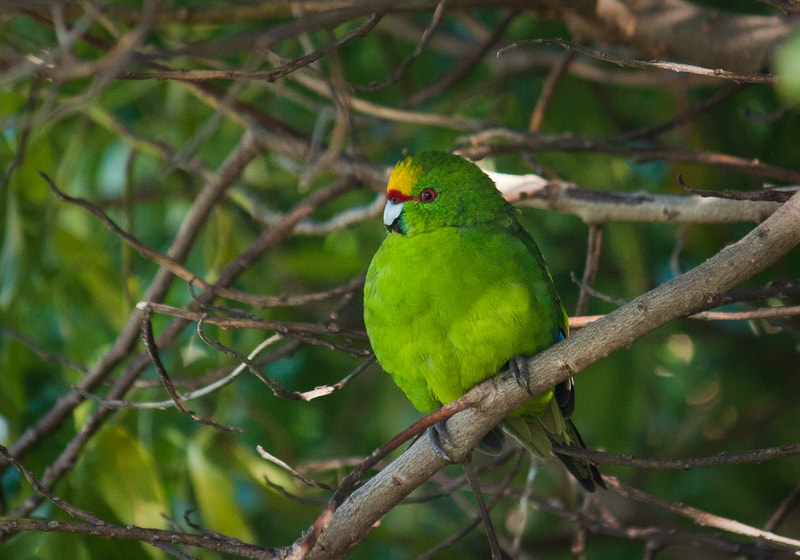 | Yellow-crowned Kakariki have a mainly green plumage with yellow head feathers. They prefer open habitats such as grasslands and farmland, and are known for their chatty and active personalities. |
| Antipodes Island Kakariki | 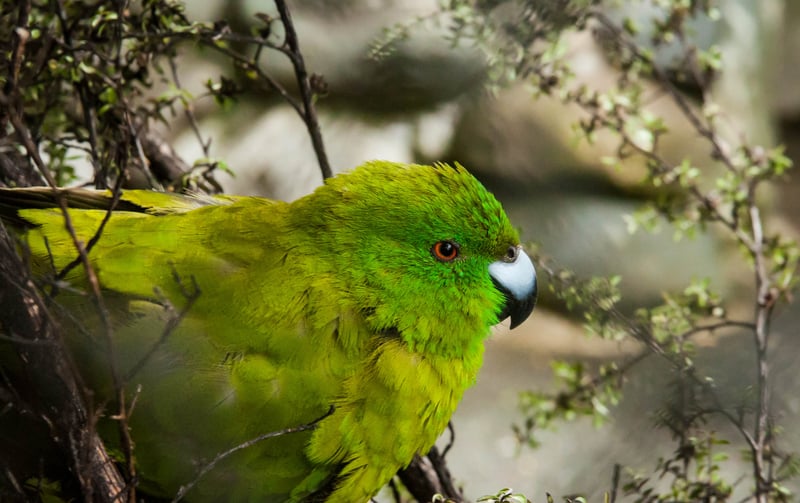 | Antipodes Island Kakariki are a rare species with a green and yellow plumage and a distinctive blue face. They are native to the remote Antipodes Islands and are known to be curious, social and vocal birds. |
When deciding which species of kakariki to keep as a pet, it is important to consider their specific needs and personality traits. Researching each species in more detail can help you determine which would best fit your lifestyle and home environment.
Housing and Cage Requirements
Creating a comfortable and spacious habitat for your kakariki is crucial for their overall well-being. The ideal cage size should be at least 24 inches wide, 24 inches deep, and 24 inches tall, with plenty of room for your bird to move around. The cage should be made of a durable, non-toxic material, such as stainless steel or powder-coated metal, and should have a secure door latch to prevent escape.
The cage should be furnished with perches of varying sizes and materials to allow your kakariki to exercise their feet and prevent any foot problems. Natural wooden perches are a great choice as they are comfortable, non-slip, and can be easily replaced. You can also add toys, swings, and ladders to stimulate and promote play. However, be mindful not to overcrowd the cage, which can cause your bird stress and anxiety.
Keeping the cage clean and hygienic is important by regularly cleaning the food and water dishes, perches, and any bedding or substrate. Use a bird-safe disinfectant and rinse thoroughly with water to avoid harmful chemicals coming into contact with your kakariki.
Additionally, consider providing environmental enrichment for your kakariki by offering fresh branches, twigs, or leaves, and rotating them every few days. This will allow your bird to engage in natural behaviour and explore new textures and materials.

Table: Ideal Perch Sizes for Kakariki
| Perch Type | Diameter | Length |
|---|---|---|
| Natural Wood | 0.75-1 inch | 8-12 inches |
| Rope | 0.5-0.75 inch | 12-18 inches |
| PVC | 0.5-1 inch | 8-12 inches |
Diet and Feeding
Kakariki have specific dietary needs that should be met in order to keep them healthy and happy. A well-balanced diet should include a variety of fruits, vegetables, pellets, and seeds.
Fruits and Vegetables: A good proportion of your kakariki’s diet should consist of fresh fruits and vegetables. Apples, bananas, grapes, carrots, and leafy greens are all great options. Make sure to wash all fruits and vegetables thoroughly before feeding them to your bird.
Pellets: Pellets are a good source of nutrients that should make up a portion of your kakariki’s diet. Make sure to choose a high-quality pellet that is specifically formulated for parakeets.
Seeds: While seeds are a tasty treat for your kakariki, they should not make up the majority of their diet. Too many seeds can lead to obesity and other health problems. Offer seeds in moderation as a supplement to their main diet.
It’s important to provide a variety of foods and rotate them regularly to give your kakariki a well-rounded diet. Water should also be changed daily and kept fresh. Avoid giving your bird food high in sugar or salt, as it can harm their health.
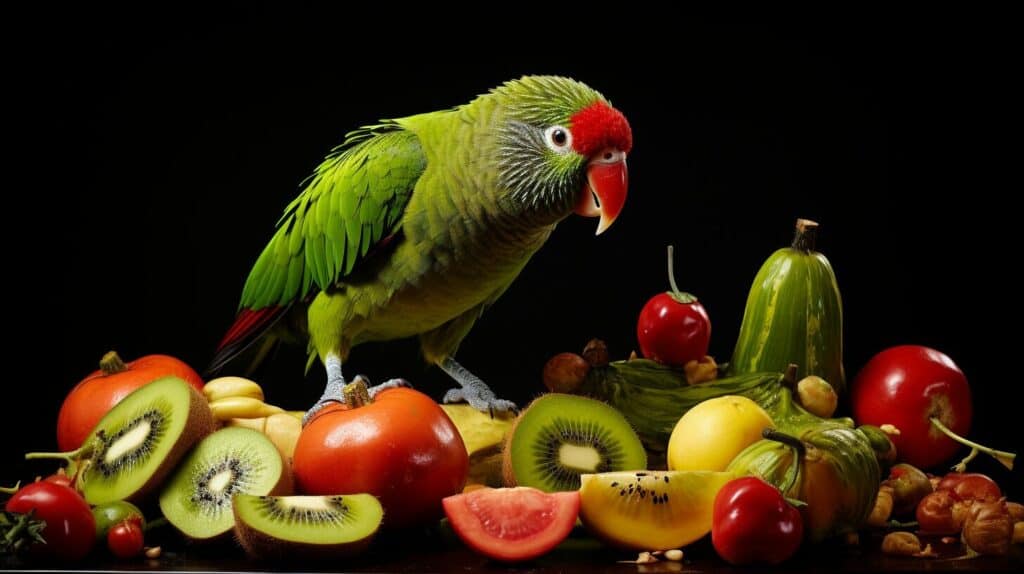
Kakariki Care: Socialization and Bonding
Socialization and bonding are crucial for the overall well-being of your kakariki. These social birds require interaction, stimulation, and attention to thrive, so creating a strong bond with your feathered friend is important. Here are some tips and advice on how to socialize and bond with your kakariki:
Handling and Training
Handling your kakariki is an essential part of socialization. Start by approaching your bird slowly and calmly, and offer a treat as a reward for their good behaviour. Gradually work up to holding your kakariki and rewarding them with treats during the handling process. This will help to build trust and encourage positive interactions with your bird.
Training your kakariki is another great way to develop a bond. They are intelligent birds and can be trained to perform tricks and commands. Positive reinforcement is the key to success, so be sure to reward your bird with treats, praise, and attention when they perform a behaviour correctly. Clicker training can also be an effective method for teaching your kakariki new behaviours.
Spending Quality Time Together
Spending quality time with your kakariki is essential for socialization and bonding. Set aside time each day to interact with your bird, whether it’s playing with toys, practicing training, or simply talking to them. Enrichment activities like puzzles and games can also provide mental stimulation and help to strengthen your bond.
Creating a Safe and Comfortable Environment
Creating a safe and comfortable environment for your kakariki is crucial for building a strong bond. Provide plenty of perches, toys, and environmental enrichment to keep your bird entertained and stimulated. Avoid placing your bird’s cage in a high-traffic area or near other pets, as this can cause stress and discomfort for your kakariki.
You can create a strong bond with your kakariki with patience, time, and effort. Socialization and bonding are essential for the overall well-being of your bird, so be sure to make it a priority in your care routine.
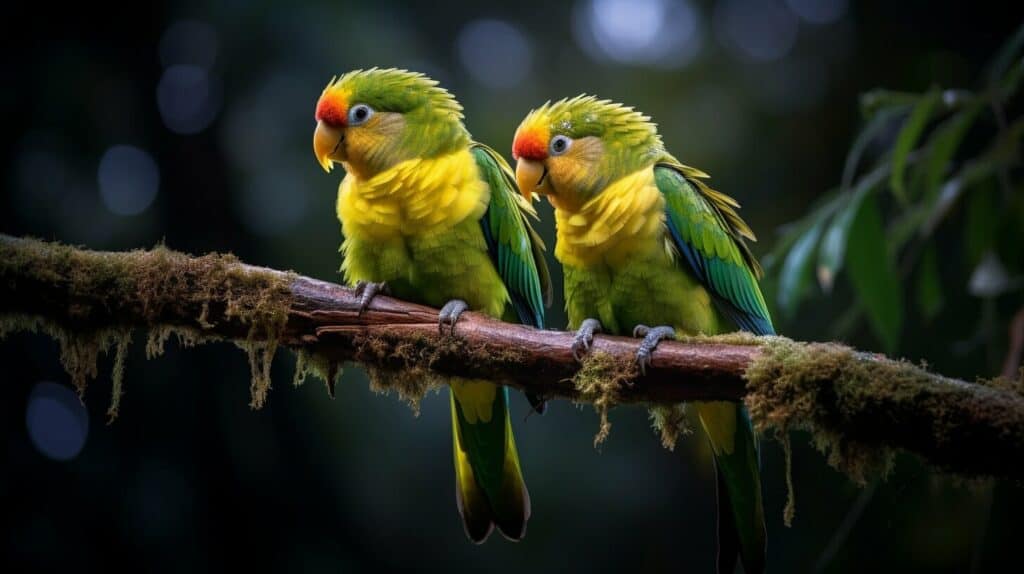
Kakariki Health and Wellness
Kakariki are generally healthy birds when provided with proper care and nutrition. However, like any other pet, they can experience health issues. Here are some common health concerns to look out for:
| Health Concern | Symptoms | Treatment |
|---|---|---|
| Feather plucking | Kakariki may start plucking or chewing their feathers due to stress, boredom, or an underlying health issue. | Identify and address the underlying cause, provide a stimulating environment, and consult with a veterinarian if necessary. |
| Respiratory infections | Kakariki may show signs of sneezing, coughing, or wheezing. | Consult with a veterinarian for antibiotics and supportive care. Ensure proper hygiene and ventilation in their environment. |
| Worm infestations | Kakariki may show signs of weight loss, lethargy, and diarrhea. | Consult with a veterinarian for deworming medication. Ensure cleanliness in their environment and provide fresh, clean water. |
To maintain your kakariki’s overall wellness, ensure they have access to fresh food and water at all times. Keep their environment clean and provide adequate space for exercise and play. Also, regular veterinary check-ups are important to detect any health issues early on and ensure that your kakariki receives proper care.
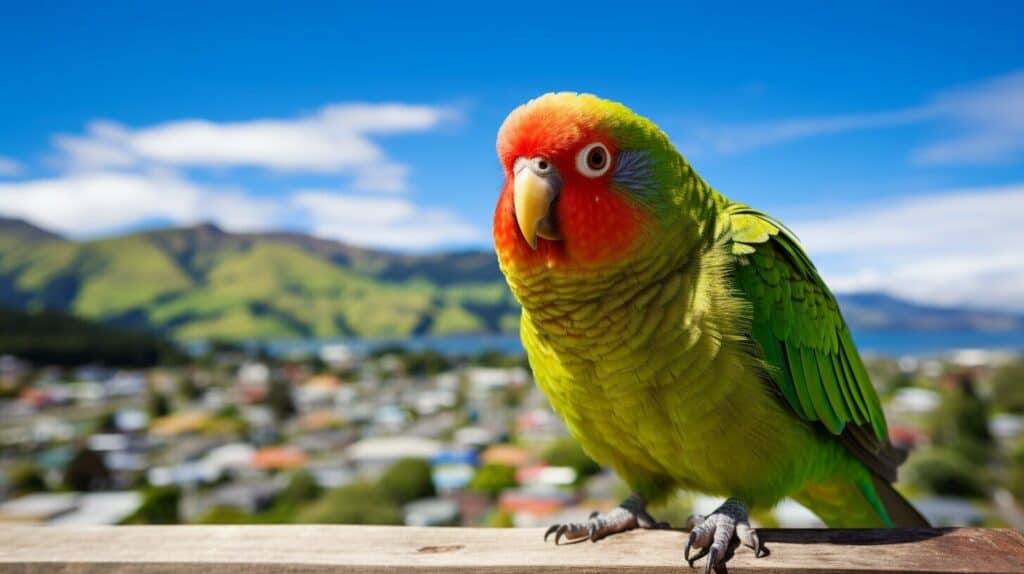
Kakariki Breeding
If you’re interested in breeding your kakariki, there are a few things to keep in mind. Breeding season for kakariki typically runs from August to January, so it’s important to ensure that your birds are healthy and well-fed during this time.
Kakariki nests should be made of natural materials, such as wood shavings or dried grass, and should be large enough to accommodate both the parents and the chicks. It’s important to monitor the temperature and humidity levels in the nest to ensure that they remain within the appropriate range for healthy development.
Once the eggs have been laid, they typically hatch within 18-22 days. The chicks will be blind and featherless at first, and will require regular feedings from both parents. As the chicks grow and develop feathers, they will become more independent and may begin to explore their surroundings.
It’s important to provide your breeding kakariki with a healthy and balanced diet that includes plenty of fruits, vegetables, and other nutritious foods. Additionally, regular check-ups with a veterinarian can help ensure that your birds remain healthy throughout the breeding process.

Breeding kakariki can be a rewarding and fulfilling experience for those who are prepared for the responsibility. You can help your birds thrive and produce healthy offspring with proper care and attention.
Handling and Taming
Handling and taming your kakariki is essential to building a strong bond with your feathered friend. While some Kakariki may naturally trust humans, others may require more patience and care.
Start by spending time around your Kakariki’s cage, talking to them softly and offering treats. Once your bird is comfortable, you can start offering your hand for them to perch on. Move slowly, and avoid sudden movements or loud noises that might startle them.
To begin taming your Kakariki, start with short training sessions several times a day. Offer treats and positive reinforcement for good behaviour, and be consistent with your training methods. Your Kakariki will learn to trust and enjoy spending time with you with patience and perseverance.
Hand Taming Your Kakariki
Hand taming your Kakariki can take some time and patience, but it can be a rewarding experience for both you and your bird. Here are some steps to follow:
- Start by offering treats and talking to your bird softly through the cage bars.
- Place an open palm inside the cage once your bird is comfortable approaching your hand.
- Allow your bird to approach your hand on its own terms, without forcing interaction.
- Offer treats and positive reinforcement when your bird shows interest in your hand.
- Slowly move your hand towards your bird, allowing them to sniff or nibble on your fingers.
- Repeat this process several times daily, gradually increasing the time your bird spends on your hand.
- As your bird becomes more comfortable with your hand, you can begin to introduce basic training commands and tricks.
Remember that taming your Kakariki requires patience and consistency. With time and effort, your feathered friend will learn to trust and enjoy spending time with you.
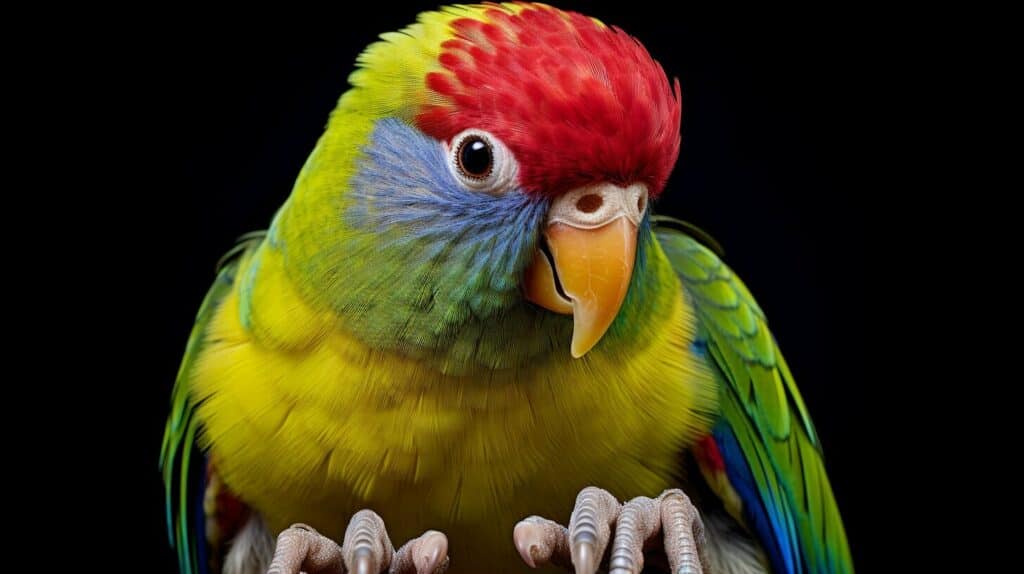
Kakariki Enrichment
Kakariki are intelligent and curious birds that require mental and physical stimulation to thrive. Enrichment activities can keep your kakariki entertained, healthy, and happy. Here are some ideas for stimulating your feathered friend:
- Food puzzles: Hide treats inside a cardboard tube, paper bag, or puzzle toy to encourage your kakariki to problem solve and be playful.
- Perch variety: Offer different types of perches to improve your bird’s foot health and encourage movement and balance. Natural wood branches, rope perches, and PVC perches are all fantastic options.
- Exploration: Allow your kakariki to explore their environment in a safe and supervised way. Offer new toys, objects, or areas to climb and play.
- Training: Use positive reinforcement techniques like clicker training or treats to teach your kakariki new tricks or commands. This can provide mental stimulation and strengthen your bond with your bird.
- Outdoor time: If the weather allows, take your kakariki outside for fresh air, sunshine, and new sights and sounds.
Remember to supervise your bird during enrichment activities and always provide safe and appropriate toys and materials. A happy and healthy kakariki will reward you with years of companionship and joy!
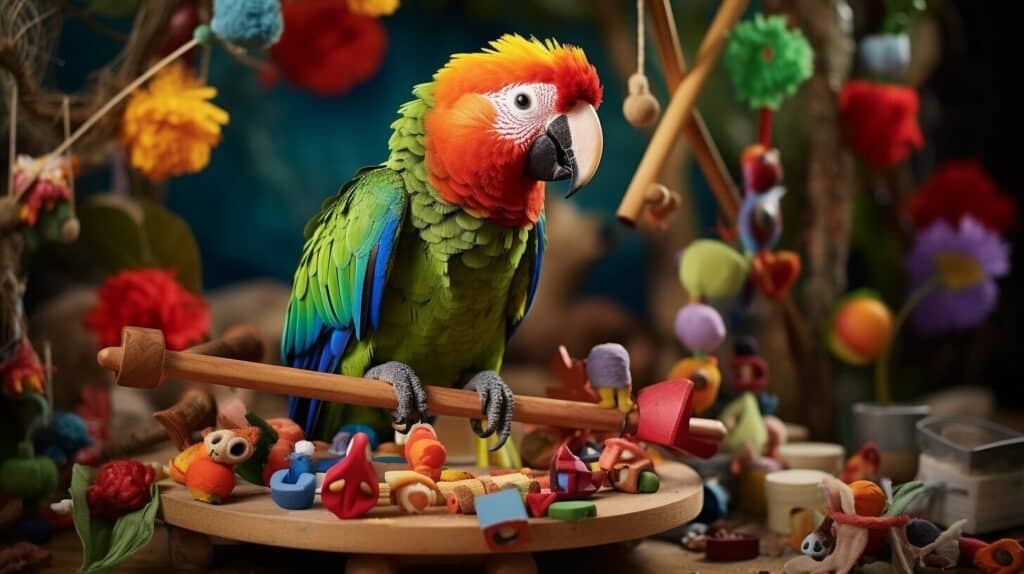
Kakariki Training
Training your kakariki is an excellent way to bond with your bird and stimulate their mind. Basic training commands, such as step up and come, can also help your kakariki feel more comfortable and confident in their environment.
If you’re new to bird training, start with basic commands and work your way up to more complex tricks. Use positive reinforcement techniques, such as offering your bird a small treat when they obey a command.
Teaching Tricks
Once your kakariki has mastered basic commands, you can move on to teaching them fun and challenging tricks. Some popular tricks for kakariki include playing dead, rolling over, and retrieving objects.
Be patient when teaching tricks and break them down into smaller steps. Reward your bird with plenty of treats and praise when they successfully complete each step.
Clicker Training
Clicker training is a popular positive reinforcement technique that can be used to train your kakariki. You’ll need a clicker and some small, tasty treats to get started.
When your bird performs a desired behaviour, immediately click the clicker and offer them a treat. With consistent training, your kakariki will learn to associate the sound of the clicker with a positive reward.
Training Tips
- Keep training sessions short and frequent, no more than 10-15 minutes at a time.
- Choose a quiet, distraction-free environment for training.
- Use a gentle, calm tone of voice when giving commands.
- Always end training sessions on a positive note, with a successful command and reward.
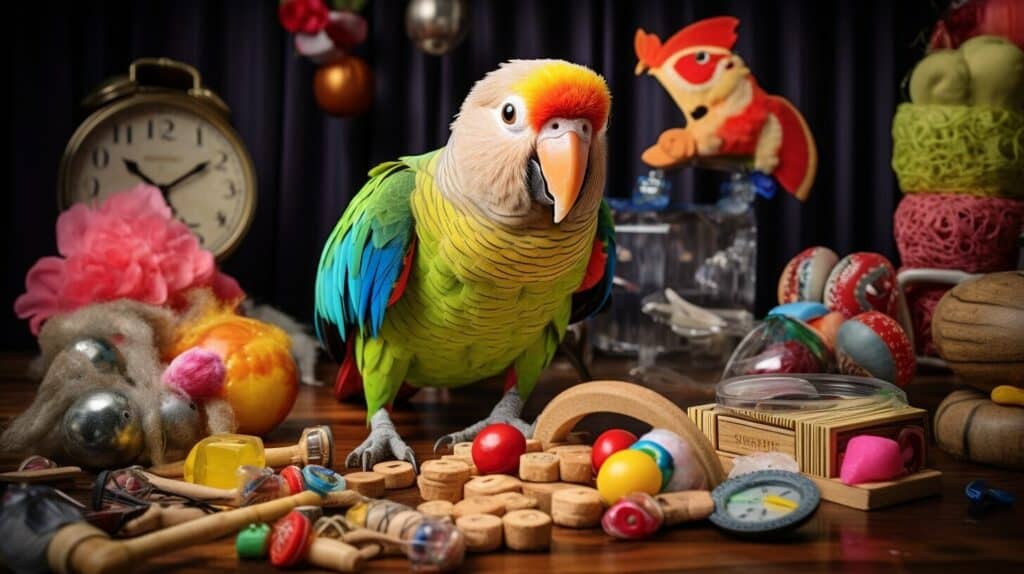
“Training your kakariki is a rewarding experience for both you and your bird. With patience, consistency, and positive reinforcement, you can teach your bird a variety of fun and useful tricks.”
Keep in mind that not all birds will enjoy training, and some may take longer to learn than others. Be patient and enjoy the process of working with your kakariki to develop a strong bond and a happy, healthy bird.
Kakariki Lifespan and Care
On average, kakariki can live between 10-15 years in captivity with proper care and attention. However, some individuals have been known to live up to 20 years or more, making them long-term companions.
Caring for kakariki requires a commitment to providing them with a healthy diet, clean living environment, and regular veterinary check-ups. Providing fresh fruits, vegetables, pellets, and seeds in their diet is essential for maintaining their overall health and well-being.
It’s also important to ensure that kakariki have access to plenty of clean water and a well-ventilated living space. Clean the cage regularly and provide fresh bedding, perches, and toys to stimulate them mentally and physically.
Regular health check-ups with a qualified avian veterinarian are essential for detecting and treating any health issues early on. Some common health issues that can affect kakariki include respiratory infections, mites, and parasites, so it’s important to keep an eye out for any symptoms and seek veterinary care immediately if needed.
Providing long-term care for kakariki requires careful planning and consideration. Their dietary needs and activity levels may change as they age, and it’s important to adjust their care accordingly. However, with proper care and attention, kakariki can be loving and loyal companions for many years.

Kakariki and Other Pets
Kakariki are social birds and can thrive in multi-pet households. However, introducing them to other pets requires careful consideration and preparation to ensure their safety and well-being.
If you have other pets at home and are planning to bring a kakariki into your household, it is important to introduce them gradually and under supervision.
Before introducing your kakariki to other pets, make sure that they are comfortable and familiar with their new environment. This will help reduce their stress levels and make the introduction process smoother.
When introducing your kakariki to other pets, it is important to do so slowly and carefully. Start with short, supervised interactions and gradually increase the amount of time they spend together.
Always monitor your pets closely during interactions and separate them if any conflicts arise.
In general, kakariki can get along with other pets, such as cats and dogs, as long as they are properly socialized and introduced in a safe and controlled environment. However, it is important to note that some pets may see kakariki as prey, so it is crucial to closely monitor their interactions and never leave them unsupervised.
It is also important to provide your kakariki with their own space and resources, such as a separate cage and food and water dishes. This will help prevent potential conflicts and ensure your kakariki feels safe and comfortable in their new environment.
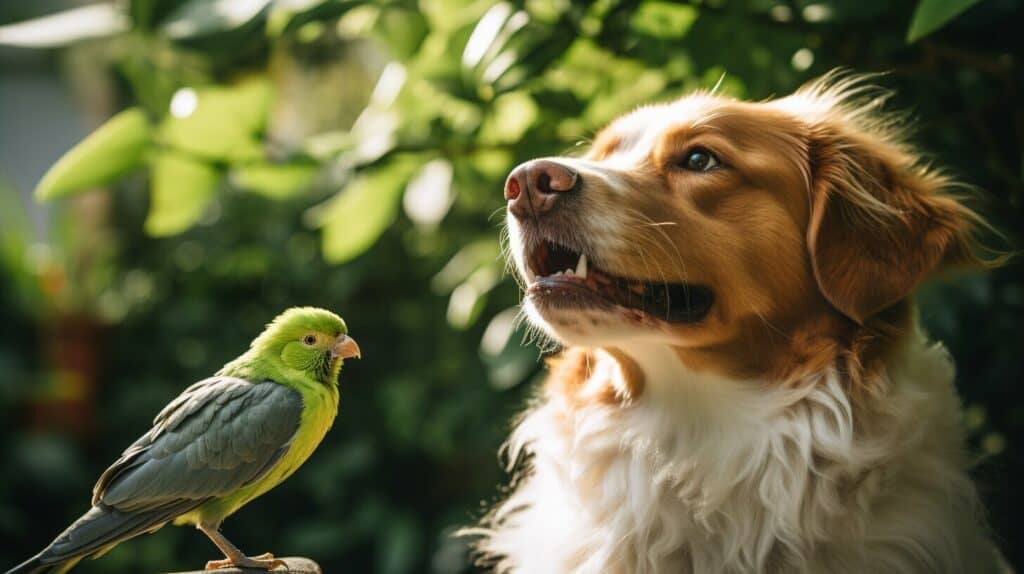
Kakariki Travel Tips
Travelling with your feathered friend can be a fun adventure, but ensuring their safety and comfort during transport is important. Here are some tips for travelling with your kakariki:
Preparing for Travel
Prior to travel, it’s important to ensure your kakariki is healthy and up-to-date on all necessary vaccinations. You may also want to consider purchasing a travel carrier that is appropriately sized for your bird and meets airline regulations.
Packaging food, water, and any necessary medications for your kakariki is also a good idea. Bringing along comfort items, such as their favourite toys or a familiar blanket, can also help reduce stress during travel.
Travelling by Car
When travelling by car, ensure your kakariki is secured in a carrier and placed in a safe, well-ventilated area of the vehicle. Avoid exposing your bird to extreme temperatures and never leave them unattended in the car.
You may also want to consider covering the carrier with a light sheet to reduce stress and prevent drafts. Offering water and a small amount of food during stops can also help keep your bird hydrated and comfortable.
Travelling by Airplane
If travelling by airplane, be sure to check the airline’s specific regulations regarding bird transport. Booking a direct flight whenever possible is important to reduce stress and avoid possible layovers in extreme temperatures.
Prepare your bird’s carrier according to airline regulations and label it clearly with your contact information. You may also want to bring along a copy of your bird’s health records for added security.
Finally, remaining calm and patient during travel with your kakariki is important. With the right preparations and care, your feathered companion can safely and comfortably accompany you on your adventures.

Frequently Asked Questions (FAQ)
Here are some commonly asked questions related to kakariki care:
What size cage is appropriate for my kakariki?
Kakariki need enough space to move around comfortably. A cage with dimensions of at least 24x18x18 inches is appropriate for one bird. If you have more than one kakariki, ensure that the cage is large enough for them to move around and fly in.
What should I feed my kakariki?
Kakariki have a varied diet consisting of pellets, seeds, fruits, and vegetables. It is important to provide a balanced diet with a variety of foods to ensure they receive all the necessary nutrients. Avoid feeding them high-fat and high-sugar food items as these can cause health issues.
How often should I clean my kakariki’s cage?
You should clean your kakariki’s cage at least once a week, but ideally every other day. Remove any uneaten food and clean the food and water dishes daily. To keep the cage clean and hygienic, you should also remove and replace the bedding, and wash and disinfect the perches and toys regularly.
How can I bond with my kakariki?
You can bond with your kakariki by spending quality time with them every day, talking to them, and offering them treats. You can also train them to do tricks, which will strengthen the bond between you and your bird. It is important to handle and interact with them regularly to build trust and confidence.
What are some common health issues in kakariki?
Kakariki are generally hardy birds, but they can be susceptible to certain health issues such as respiratory infections, feather picking, and psittacosis. It is important to monitor your bird for any changes in behaviour or appearance that may indicate a health problem and seek the help of a veterinarian if necessary.
Can kakariki be kept with other pets?
Kakariki can be kept with other pets, but it is important to introduce them slowly and carefully to ensure their safety. You should supervise their interactions and provide separate spaces for them to retreat to if needed. Some pets, like cats and dogs, may have a natural prey drive towards birds, so it is important to monitor them closely.
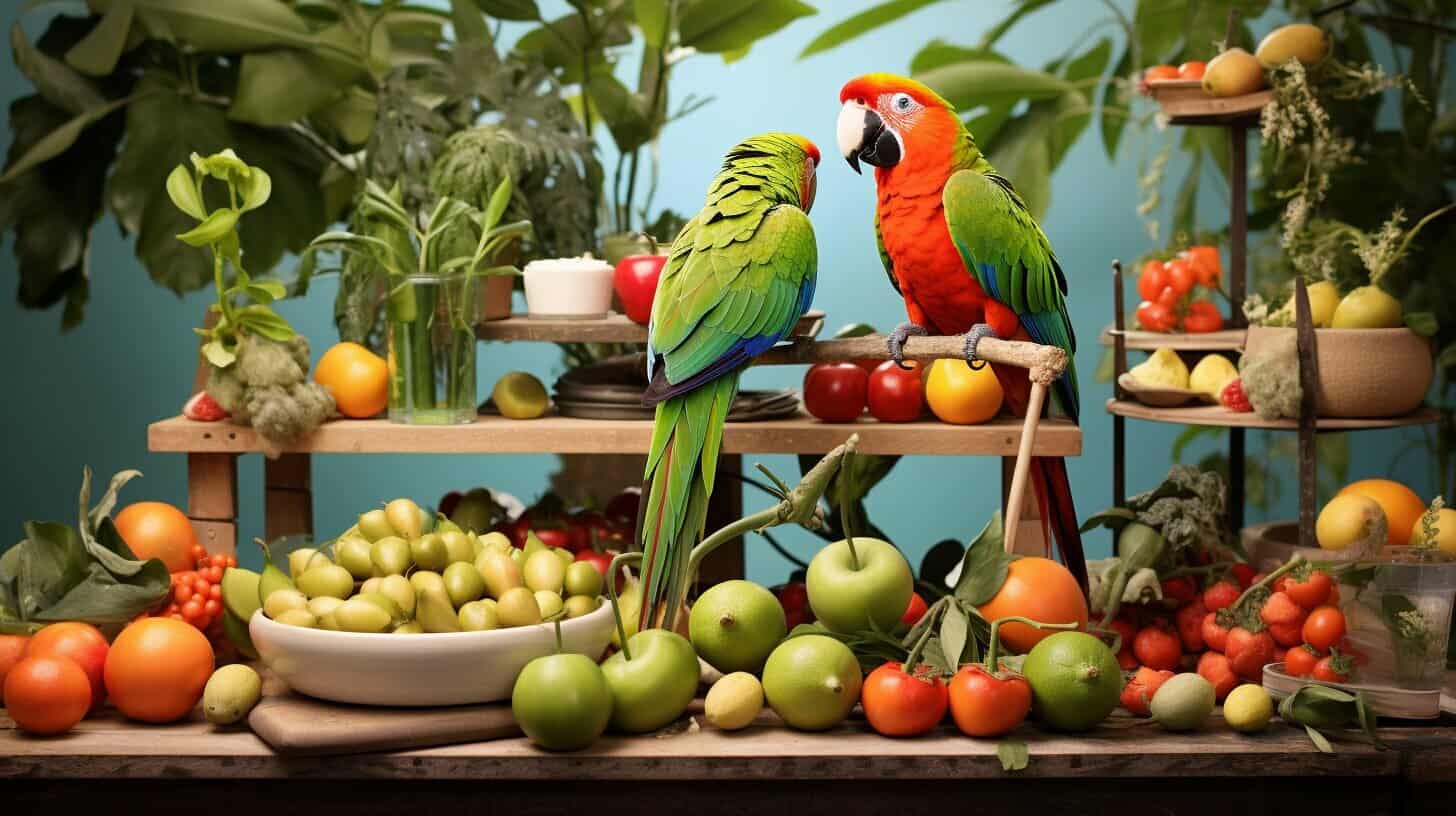

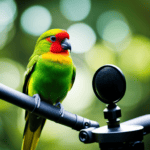
Have comments or questions about this article? Then get involved!
Spotted an error or something we have missed? Let us know